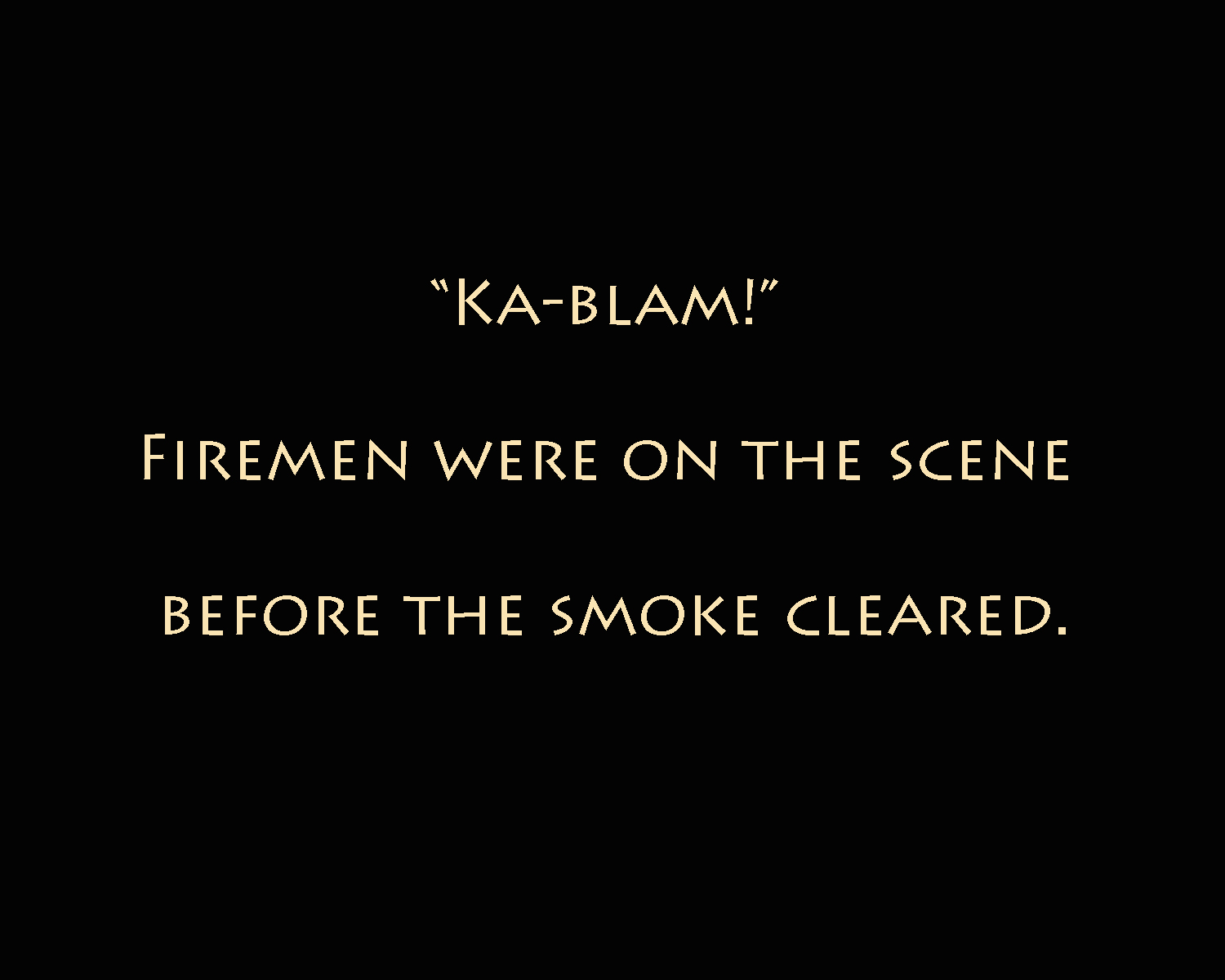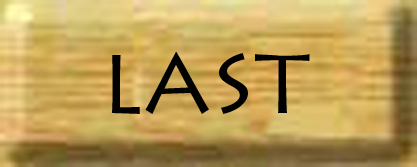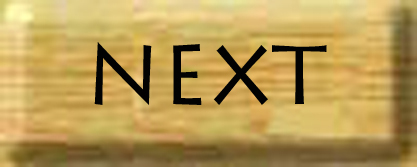
Kindergarten Sandbox
On most of my adventures, we did not sleep in thick black smoke for the benefit of the lemons.
By my sophomore year in high school, we had moved to Carpinteria, so that Judy and I could graduate there. Our sister Joan had gotten married and started her own family, and the rest of us had returned to Carpinteria, my mother's hometown. A lot had changed, of course, from the 1940's when I first started becoming aware of my surroundings. Down by the pier at the mouth of Carpinteria Creek there had stood a beautiful dance pavilion, the Cerca Del Mar building, right next to the beach.
Kids were basically free to go play anywhere in the valley. You could hike up into the hills and go to Lover's Leap in Franklin's Canyon, or you could goof around on the railroad tracks and climb up under the train trestle over the creek and watch the train rumble above you inches away, or you could snorkel out at Carpinteria reef. The rule was to be home before dark, or before dinner, depending on the time of year. You could go swimming anywhere west of the pier.
The rule was that you couldn't go swimming east of the Cerca Del Mar building. The town's sewer line terminated just offshore there, and the current would drift the effluent on down the coast away from town. They told us kids that if you swam down off that part of the beach you might get polio! A new sewer plant was built near the Mishopsno sycamore in 1951. It treated the sewage and extended the discharge farther out into the ocean. After that, you were allowed to go swimming down there, surf at the Tar Pits, and Jellybowl, and snorkel around the oil pier at the end of Dump Road.
I think it was in the summer of 1959, some disturbed student had set fire to the high school, and several of the classrooms were destroyed, including the chemistry room. By the Fall semester arrangements had been made to compensate for the missing classrooms, and it was determined that the chemistry room could best be relocated to the kindergarten room at the "Main School", since, like our burnt out chemistry lab, there were worktables with individual sinks we could use for our various experiments.
Our broad shouldered chemistry teacher, Mr. Hale, was quite a character. His dream was to be a lounge singer, apparently, and would break into song with the least bit of encouragement. My after school job at the time was to drive around town in the dry cleaner's panel truck, picking up and delivering. In Mr. Hale's closet there were lots of tuxedos in various colors. Chemistry teacher was his day job.
When we were still in the high school chemistry room, the year before, Mr. Hale had received a shipment of science equipment and supplies. In the box was an electric eye device, of the kind that when you break the beam it triggers a choice of signals. The same semester, he taught us how to make a flash compound, using aluminum powder and a powdered oxidant that I won't name here. We had fun making flash powder and small explosions. One morning, we discovered we could climb in the unlocked window to the chemistry room before Mr. Hale arrived, and we set up a booby trap.
We attached a mirror to the inside of the classroom door, and aimed a light beam at it so that it was reflected to the electric eye device. Electric wires were connected to a spark plug lying in a nest of our flash powder. We went back out the window, and waited in the hall for the unsuspecting Mr. Hale to come along.
We all said good morning to him and he turned to unlock and open the door. Success! A great flash boom, and the classroom ceiling filled with smoke that billowed out into the hall. We were in minor trouble, including Mr. Hale. The school was quickly aired out and things returned to normal. We were the most laid back high school ever.
The summer fire at the high school had nothing to do with Mr. Hale or his students' pyrotechnics, and when school started in the fall, we resumed our classroom experiments with flash powder. Mr. Hale decided that we could make a solid rocket motor using our mixture, by just putting it in a short piece of aluminum tubing that was plugged on one end, and lighting a fuse. The burning gasses would rush out of the open end and propel it in the opposite direction. Simple. Science.
We pounded a wooden plug in one end, and then packed the tube full, with a fuse dangling out. Mr. Hale and all my classmates stood behind the four-foot brick wall that surrounded the Kindergarten yard. For our test we nailed the "rocket" to the corner of the sandbox that sat in the middle of it, just like a static firing at Rocketdyne. I was the one selected to light our handmade fuse.
I struck the match and backed up slowly as the fuse started to sputter. Mr. Hale said, "You better get on the other side of the wall, John." I had just climbed over and my feet had hit the sidewalk, when, "Ka-blam!" an explosion shook the ground, rattling windows all over town.
This was the same Kindergarten a block away from our family home on Walnut Avenue. Less than a block from the school in the other direction was the Carpinteria Fire Department. Firemen were on the scene before the smoke cleared.
They were pretty upset with Mr. Hale, because the "rocket motor" we had created was indistinguishable in size, shape and function from a stick of dynamite. The corner of the sandbox was in splinters. The aluminum tube was found split wide open near where it had hit the brick wall where I had been standing.
Nobody was hurt. Our ears were ringing and we had a good story to tell. He was good-natured, one of the most important qualities in a teacher and we did learn stuff about chemistry, fun stuff.





Copyright © 2022 John Oliver
All Rights Reserved
mail@unclejohnsweb.com

By my sophomore year in high school, we had moved to Carpinteria, so that Judy and I could graduate there. Our sister Joan had gotten married and started her own family, and the rest of us had returned to Carpinteria, my mother's hometown. A lot had changed, of course, from the 1940's when I first started becoming aware of my surroundings. Down by the pier at the mouth of Carpinteria Creek there had stood a beautiful dance pavilion, the Cerca Del Mar building, right next to the beach.
Kids were basically free to go play anywhere in the valley. You could hike up into the hills and go to Lover's Leap in Franklin's Canyon, or you could goof around on the railroad tracks and climb up under the train trestle over the creek and watch the train rumble above you inches away, or you could snorkel out at Carpinteria reef. The rule was to be home before dark, or before dinner, depending on the time of year. You could go swimming anywhere west of the pier.
The rule was that you couldn't go swimming east of the Cerca Del Mar building. The town's sewer line terminated just offshore there, and the current would drift the effluent on down the coast away from town. They told us kids that if you swam down off that part of the beach you might get polio! A new sewer plant was built near the Mishopsno sycamore in 1951. It treated the sewage and extended the discharge farther out into the ocean. After that, you were allowed to go swimming down there, surf at the Tar Pits, and Jellybowl, and snorkel around the oil pier at the end of Dump Road.
I think it was in the summer of 1959, some disturbed student had set fire to the high school, and several of the classrooms were destroyed, including the chemistry room. By the Fall semester arrangements had been made to compensate for the missing classrooms, and it was determined that the chemistry room could best be relocated to the kindergarten room at the "Main School", since, like our burnt out chemistry lab, there were worktables with individual sinks we could use for our various experiments.
Our broad shouldered chemistry teacher, Mr. Hale, was quite a character. His dream was to be a lounge singer, apparently, and would break into song with the least bit of encouragement. My after school job at the time was to drive around town in the dry cleaner's panel truck, picking up and delivering. In Mr. Hale's closet there were lots of tuxedos in various colors. Chemistry teacher was his day job.
When we were still in the high school chemistry room, the year before, Mr. Hale had received a shipment of science equipment and supplies. In the box was an electric eye device, of the kind that when you break the beam it triggers a choice of signals. The same semester, he taught us how to make a flash compound, using aluminum powder and a powdered oxidant that I won't name here. We had fun making flash powder and small explosions. One morning, we discovered we could climb in the unlocked window to the chemistry room before Mr. Hale arrived, and we set up a booby trap.
We attached a mirror to the inside of the classroom door, and aimed a light beam at it so that it was reflected to the electric eye device. Electric wires were connected to a spark plug lying in a nest of our flash powder. We went back out the window, and waited in the hall for the unsuspecting Mr. Hale to come along.
We all said good morning to him and he turned to unlock and open the door. Success! A great flash boom, and the classroom ceiling filled with smoke that billowed out into the hall. We were in minor trouble, including Mr. Hale. The school was quickly aired out and things returned to normal. We were the most laid back high school ever.
The summer fire at the high school had nothing to do with Mr. Hale or his students' pyrotechnics, and when school started in the fall, we resumed our classroom experiments with flash powder. Mr. Hale decided that we could make a solid rocket motor using our mixture, by just putting it in a short piece of aluminum tubing that was plugged on one end, and lighting a fuse. The burning gasses would rush out of the open end and propel it in the opposite direction. Simple. Science.
We pounded a wooden plug in one end, and then packed the tube full, with a fuse dangling out. Mr. Hale and all my classmates stood behind the four-foot brick wall that surrounded the Kindergarten yard. For our test we nailed the "rocket" to the corner of the sandbox that sat in the middle of it, just like a static firing at Rocketdyne. I was the one selected to light our handmade fuse.
I struck the match and backed up slowly as the fuse started to sputter. Mr. Hale said, "You better get on the other side of the wall, John." I had just climbed over and my feet had hit the sidewalk, when, "Ka-blam!" an explosion shook the ground, rattling windows all over town.
This was the same Kindergarten a block away from our family home on Walnut Avenue. Less than a block from the school in the other direction was the Carpinteria Fire Department. Firemen were on the scene before the smoke cleared.
They were pretty upset with Mr. Hale, because the "rocket motor" we had created was indistinguishable in size, shape and function from a stick of dynamite. The corner of the sandbox was in splinters. The aluminum tube was found split wide open near where it had hit the brick wall where I had been standing.
Nobody was hurt. Our ears were ringing and we had a good story to tell. He was good-natured, one of the most important qualities in a teacher and we did learn stuff about chemistry, fun stuff.





Copyright © 2022 John Oliver
All Rights Reserved
mail@unclejohnsweb.com

All Rights Reserved
mail@unclejohnsweb.com
